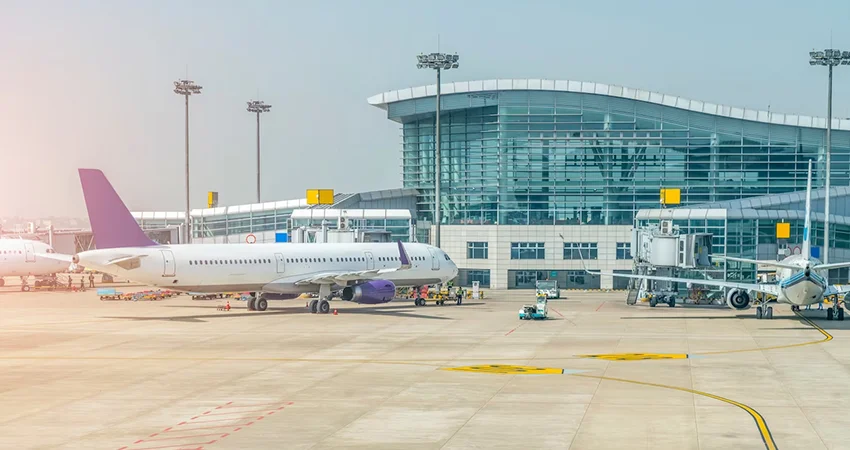- SERVICE@EYEWEB.COM
- 888.449.9540
- #1 Online Safety Eyewear Program
Airline
- Home
- Airline
Airline
The airline industry involves a wide range of tasks that come with inherent risks to eye and vision safety. From aircraft maintenance and ground operations to cabin preparation and fuel handling, the work environment presents numerous hazards, including:.
Jet Blast and Debris
Aircraft maintenance and ground crew operations expose workers to high-speed debris propelled by jet engines. Tiny particles, dirt, or stones can become dangerous projectiles, causing eye injuries
Chemical Exposure
Aircraft maintenance often requires the use of strong chemicals such as cleaning agents, hydraulic fluids, and de-icing solutions. Direct exposure to these chemicals can irritate or severely damage the eyes, leading to temporary or permanent vision issues.
UV Radiation
Prolonged exposure to sunlight and UV radiation during outdoor operations—such as fueling or performing routine checks on the tarmac—can increase the risk of cataracts, macular degeneration, and other eye conditions.
Welding Arc Flash
Aircraft repair and construction may involve welding, which generates intense light and heat. Without proper eye protection, this can lead to corneal flash burns and UV radiation damage.
Ergonomic Challenges
From prolonged use of digital screens for flight management systems to working under poor lighting in confined spaces, airline personnel are at risk of eye strain, fatigue, and headaches.
Flying Debris During Repairs
Aircraft engine repairs and structural maintenance often involve grinding, sanding, or cutting metal components, which can release harmful particles that endanger the eyes.

The chemical industry requires stringent safety protocols to minimize eye hazards and ensure the health and safety of workers. Just like in aerospace, the use of proper Personal Protective Equipment (PPE) is vital. High-quality safety glasses—whether prescription or non-prescription—serve as a critical safeguard against chemical exposure and particulate threats.
Modern technology such as Automated Roster Management Systems can help enhance safety compliance by tracking worker schedules and ensuring proper PPE usage. Additionally, implementing systems that are HIPAA-compliant and SOC-2-certified guarantees that industry standards protect employee information. Experience virtual try-ons that use augmented reality technology to speed up and simplify the eyewear selection process. Departmental billing and P-cards solutions, ensure that your financial processes are efficient and compliant with business requirements.

